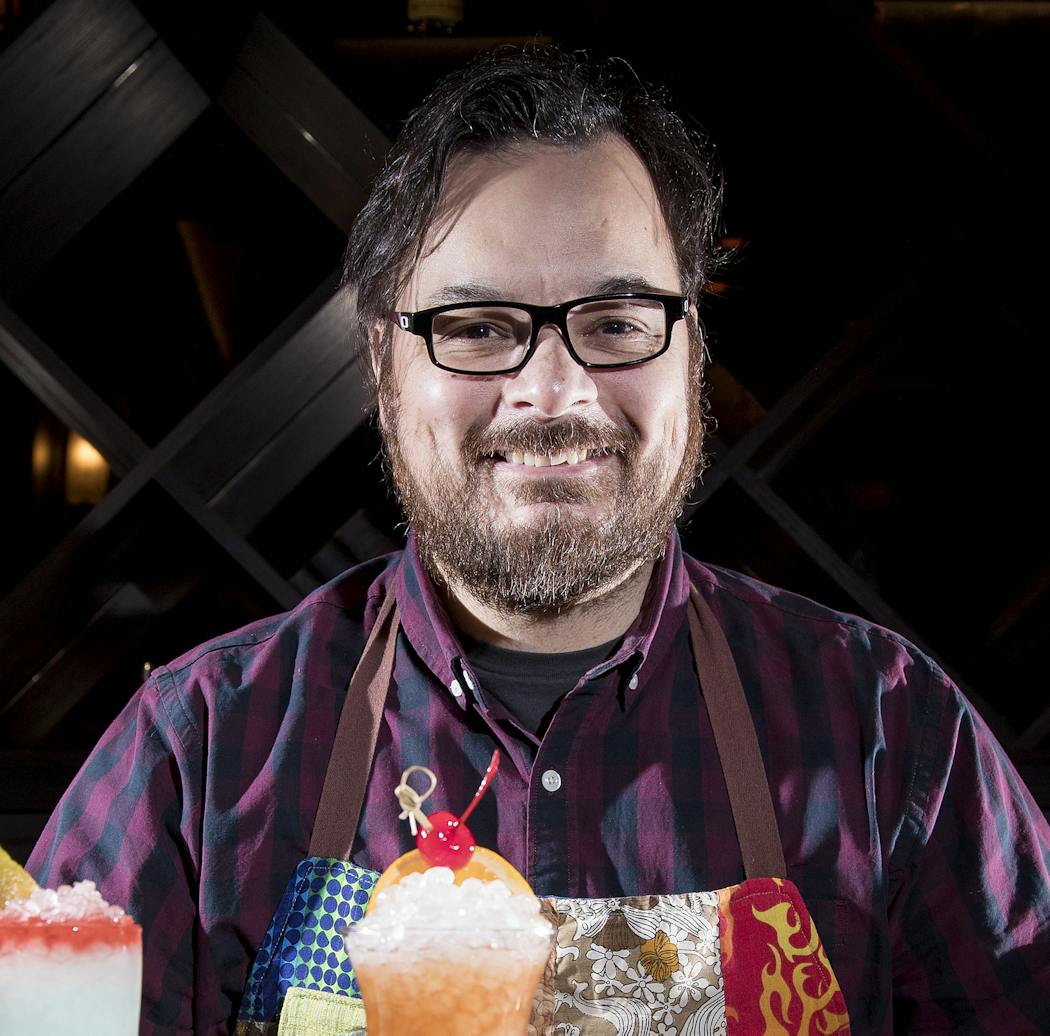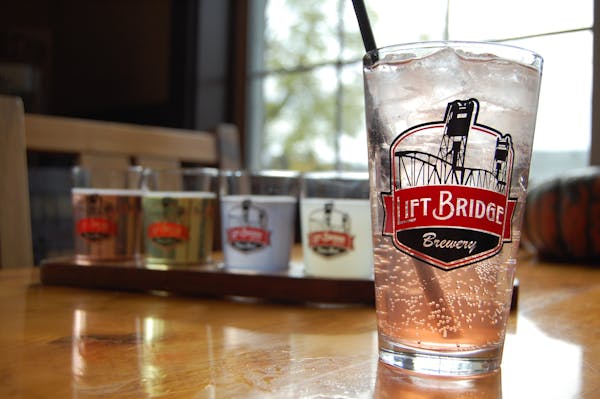The beer mania seems to have plateaued or, if you will, lost some of its hop. The wine scene is humming along, steady as she goes. But when it comes to local potables, the excitement is all about cocktails.
Pioneered over the past decade by the likes of Johnny Michaels and Pip Hanson, the craft-cocktail movement shows no signs of abating. From the cities to the suburbs, mixmasters are wowing patrons with dynamic concoctions. And with the recent passage of the Minneapolis "Yes on 1" referendum that streamlined liquor-license procurement, smaller establishments are vaulting aboard this bandwagon.
Whether tweaking old favorites (a Cosmo with cherry bark bitters and edible flowers on top, anyone?) or inventing something entirely new (In Bloom's blend of macerated rosé with pink peppercorns, neutral grain spirits and sparkling basil water), inventive sorts are surprising and delighting patrons.
Many factors are in play, including the desire for lower-alcohol libations and the complexity of flavors that mirror what enthusiasts like about food. And as with the best cuisine, the ingredients are crucial. Myriad companies have popped up to provide everything from bitters and syrups to optimum ice cubes.
And of course, none of this would be happening without creative people mastering and experimenting with their trade.
Here, then, is a closer look at four of the masters feeding the fad: two purveyors and two mixologists.
Erik Eastman
Eastman is a player in two fields: cocktail consulting and ice.
Yes, we're talking about frozen water, a much more important element than traditionalists might realize.
"I tell people every single day that ice is a component of the cocktail, not an afterthought," said Eastman, director of sales for Minnesota Ice. He added that the 2-inch cube "preserves a cocktail as the bartender intended, because of the surface area versus a pile of real flimsy ice cubes."
The company, which delivers about 16,000 2-inch cubes to 130 Upper Midwest restaurants every week, provides "dense ice" that keeps shaken and stirred drinks from diluting.
"It really helps bartenders make better cocktails," Eastman said.
Minnesota Ice, also one of the area's largest sculpture-grade ice manufacturers, recently made a 300-pound block from a 23,000-year-old aquifer at the erstwhile Schmidt Brewery.
Cubes from that hunk are being used in a test run at In Bloom, where Eastman helped create the aforementioned rose cocktail as part of his other gig: proprietor of the Easy & Co. cocktail consulting firm and bitters purveyor.
In working with restaurants, Eastman has been able to "put some of my favorite savory ingredients to work: watercress, black pepper and autumn spices, making cocktails with very subtle flavors." Meanwhile, Easy & Co. sells bitters kits online (easyandcompany.com) in flavors such as orange, cherry vanilla and habañero.
Jesse Held
Held and partner Jeff Erkkila also make many flavors of a crucial cocktail ingredient, syrup. Their company, Earl Giles (using their two middle names), sells roughly 80 various syrups to local restaurants, and three of them — piloncillo, ginger and cinnamon — are available at France 44, Zipps Liquors and other retail outlets.
In his other job as bar director for the Jester Concepts restaurant group (Borough, Monello and others), Held had a "eureka" moment.
"In every program we ever went into, we would always find ourselves making different syrups and tinctures," he said. "When we were opening Constantine, we decided 'Why don't we do this for more people, help with the same stuff that we've been doing?' It kind of was an accident."
Now, though, having celery rose elixir or apple scallion or bubble gum syrup in a drink is no accident. Most of the products are customized for certain restaurants, Held said, including a seasonal chai for Parlour Bar and herbes de Provence for Jester Concepts' new P.S. Steak, in Minneapolis.
"What we're doing is bringing the culinary world into the liquid world, taking flavor components and combinations from the kitchen and bringing them into the bar," Held said. "With not having to distill anything, it gives us the freedom to try a lot of stuff and figure out how to combine some pretty neat flavors."
Ralena Young
Like Held, Young has been in the business for a quarter-century, working every conceivable job at every conceivable type of restaurant (Rooster's, Bubba Gump, etc.). "It's all I've ever done," she said, "and I absolutely love it. I've worked every position, but my favorite place is in the bar."
And that's where she now finds herself at three restaurants under the Eyes Wide Hospitality umbrella: Volstead House in Eagan, Bourbon Butcher in Farmington and the just-opened Whiskey Inferno in Savage.
She considers training the most important part of her job, and she focuses on "designing around what people want to drink, looking for what they enjoy rather than what's the coolest new thing we have to offer."
But her restaurants stock hundreds of whiskeys — "the wall at Volstead is insane" — and Young loves taking adventurous customers down the road less traveled. "We had a local guy in Farmington build us smoke boxes so we can do up to four smoked Manhattans tableside," she said.
And then there's her reinvention of the Cosmopolitan, dubbed It's Not Me It's You.
"We took lime juice and turned it into the sweet aspect: took cranberry and added malic acid and citric acid — and threw in an egg white because egg whites make everything better, and they make drinks sexy. Then we topped it with housemade cherry bark bitters and edible flowers.
"Our No. 1 goal is to make people comfortable, and then we can introduce them to new stuff or kind of geek out with whatever experience they're looking for."
Clearly, these are not your father's suburban bars.
Marco Zappia
Attention, those who have been cave-dwelling for the past year: Marco Zappia is not only the hottest person in the local libation world, but a national star, as well. Esquire magazine just feted him as "National Beverage Director of the Year."
Kudos to him and to the magazine for recognizing distinctive, innovative efforts. After helping Martina get off to a roaring start with his ingenious creations, Zappia now is spending most of his evenings making offshoot Colita an equally popular ticket.
The ingenuity is the same at both places, but the philosophies at the heart of the restaurants differ.
"Martina is all about apothecary, herbalism and hedonism. Colita is about shamans and alchemists who were Mayan, Aztec and Zapotec," he said. "The European way [tapped into at Martina] was maceration. The Meso-American way [utilized at Colita] was fermentation. Those two concepts are very different but come from the same idea: How do we preserve these herbs, these botanicals?"
While Martina's drinks often star one of Zappia's four housemade vermouths (bianco, americano, rosa and rosso, all delicious on their own), all of Colita's cocktails have a fermented aspect.
Zappia insists that this is all part of a bigger, broader picture.
"Minneapolis is a really exciting place for cocktails right now," said Zappia. "There's much more of a drink culture, with micro-drinking cultures popping up around the city."
All of it being fueled by enterprising sorts like these four folks.





